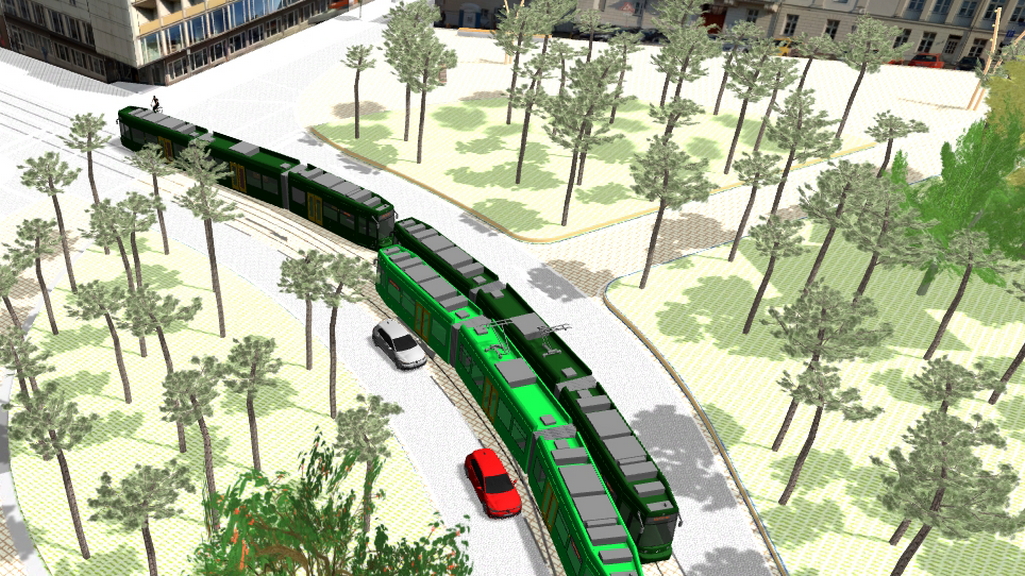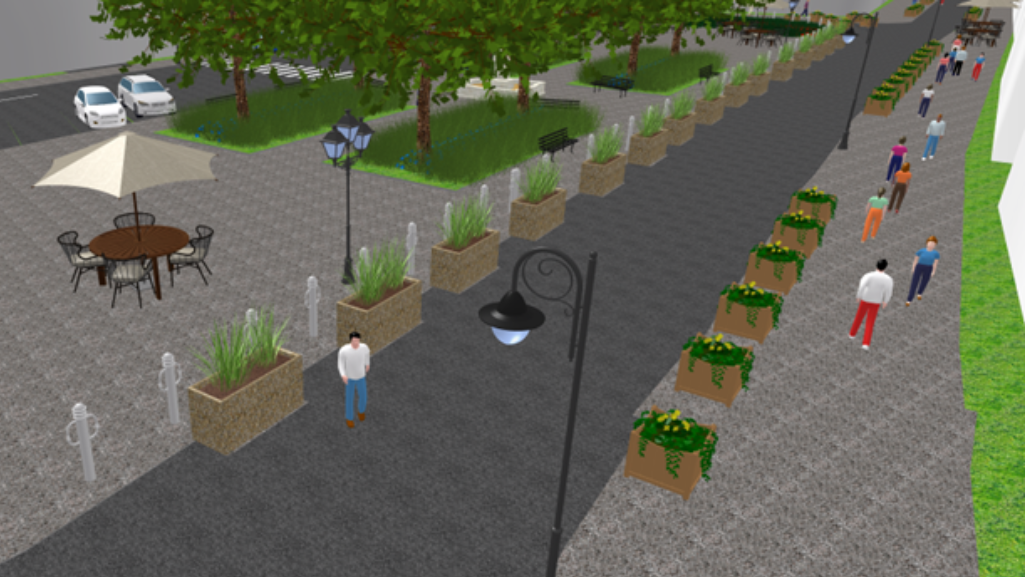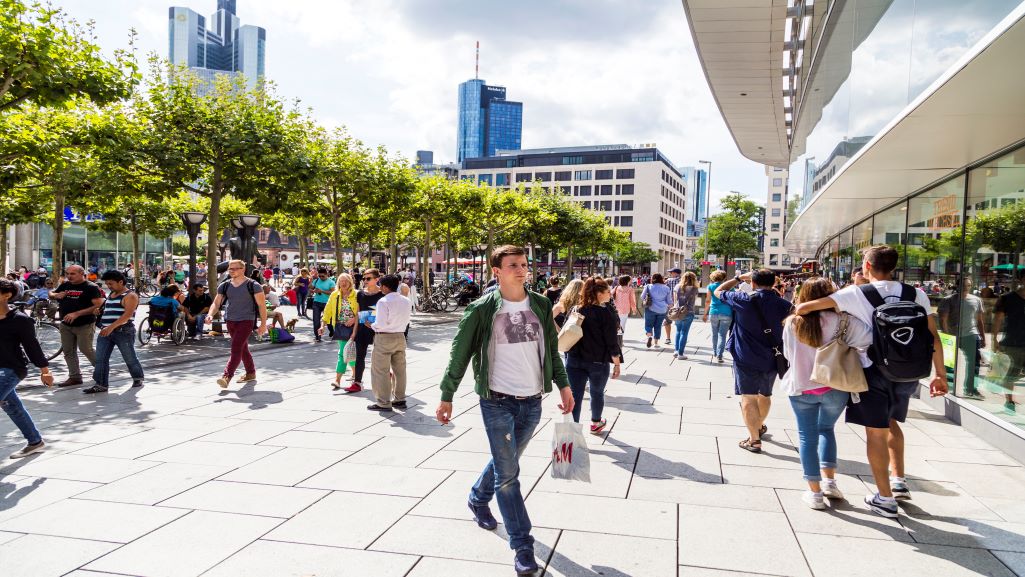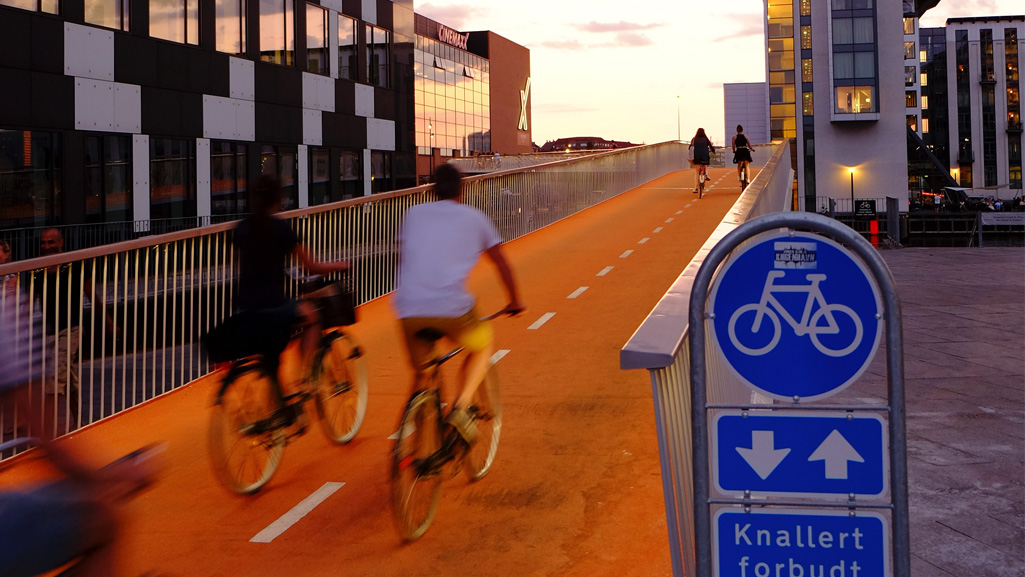The starting point
The German city of Kassel has a high-quality digital 3D city model. This model has been developed in recent years by the city’s Department of Surveying and Geoinformation and is kept up to date using the CityGRID software from UVM Systems. The road traffic and civil engineering department wanted to use this city model for the visualization of traffic planning projects.
On the occasion of the planned redesign of Brüder-Grimm-Platz, a neuralgic point in Kassel’s city center in terms of traffic, which is accompanied by great public interest, there was a desire for the most efficient solution possible: both offices involved should be able to concentrate on their core task, the surveying office on the management of the 3D city model and the civil engineering office on traffic planning in the usual style. Neither the city model should have to be imported into Vissim, nor the transport planning into the 3D database of the city model. Instead, traffic planning and the city model should be merged in a 3D visualization and displayed together.
Specifically, the solution was to be provided by an interface of the visualization software CityGRID Scout, which enables real-time coupling with PTV Vissim and displays the traffic simulation created there in real time in the 3D visualization of the city model.
The Method
CityGRID Scout is a 3D visualization software (a “3D viewer”) which was developed by UVM Systems on the basis of the Unity Engine. Unity originates from the computer games sector and is particularly powerful in the 3D area. The simulations created in the course of a Vissim project virtually provide a “script” for the 3D animation of each road user. In addition to the movement trajectory, Vissim also simulates other traffic-relevant behavior typical of reality, such as braking, flashing lights, opening doors, pedestrians and cyclists both moving and waiting. This behavior is of course coordinated with the traffic light control and the corresponding control of each traffic light system is also simulated. Vissim provides the “scripts” for the planned behavior of traffic lights and the corresponding realistic behavior of many thousands of road users.
To realize this, we have developed a software interface (API) that communicates with Vissim in real time via a COM server. With this interface, the information of a simulation started in Vissim is converted into correspondingly synchronized 3D animations in CityGRID Scout.
Creating a 3D Library
As a prerequisite for the 3D animation of the traffic simulation, “library objects” must be created, i.e. sample models that can be instantiated several times in different variants (e.g. in different colors) in CityGRID Scout. All library models are available in at least two LOD levels to ensure high-performance visualization. The following library objects were modeled for the Brüder-Grimm-Platz project, for example:
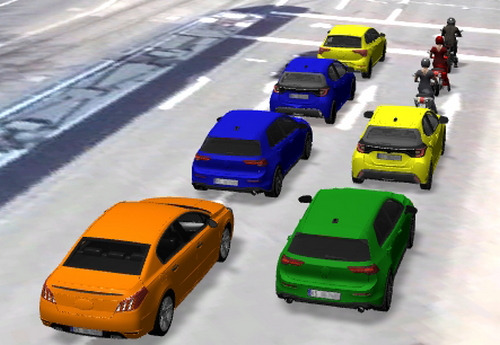
- Traffic signals, prepared for the traffic light controls simulated by Vissim. In total, over 100 different types of traffic lights were modeled.
- Pedestrians who can both walk and stop.
- Cyclists, riding and stopped with their leg down.
- Motorcyclists, riding and stopped with their leg down.
- Trucks and cars with controllable brake lights and indicators. Some of them also with an interior for simulation from the driver’s perspective.
- Typical buses for public transport in Kassel. In addition to the features of cars and trucks, the entrance doors of the buses can also be opened.
- The streetcars typical of Kassel, also with controllable doors.
As soon as the required library objects have been created, either a new Vissim project can be started from CityGRID Scout or an existing traffic simulation can be opened with Vissim. Both programs are now linked using the interface described above.
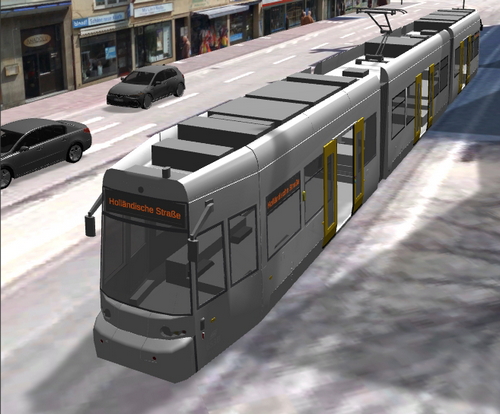
Sharpen the Results
The street axes and positions of the traffic lights transferred to CityGRID Scout are automatically interpolated to the 3D terrain model of the city model.

If there are still discrepancies in the position of individual road axes or traffic lights, these can also be moved directly in CityGRID Scout to the correct position in the city model. The plausibilized 3D road axes or traffic signals generated in this way can now be transferred to Vissim in order to calculate the traffic simulation with the correct spatial situation.
Simulation Mode
In the simulation mode of CityGRID Scout, the simulation calculated by Vissim is now transferred in real time and displayed in the 3D city model using corresponding 3D animations. At the same time, the user can navigate freely through the city model and thus assess the spatial effects of the traffic simulation from all angles. Depending on the computer configuration and the complexity of the planning, Vissim can perform between 10 and 20 calculation steps per second. The “frame rate” of the animations in CityGRID Scout is correspondingly high. This is sufficient for the technical evaluation of the simulation, but 3D animations only look smooth at approx. 30 frames per second, or better 60 frames per second.
To prepare a visually appealing and fluid 3D visualization, we have therefore implemented an additional “Playback” mode. In preparation for this mode, you can record the simulations calculated by Vissim – still in real-time coupling – in CityGRID Scout and then save them.
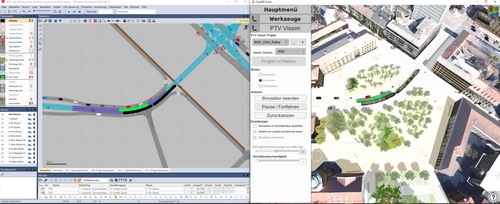
Playback Mode
In this mode, recorded and saved animations can be played back in CityGRID Scout. Real-time coupling is no longer required for this and playback can be performed independently of Vissim – by interpolation at 60 frames per second. It is also possible to control the playback of animations using a timeline, similar to a video player. At the same time, free navigation through the 3D city model is possible.
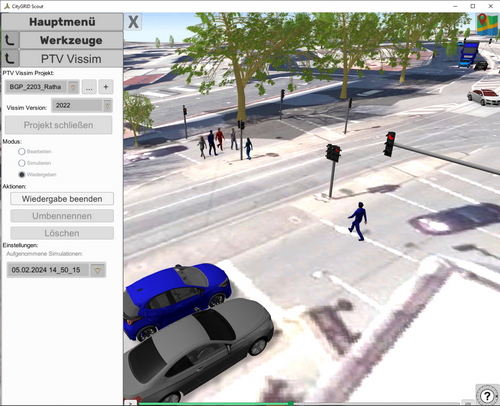
You can navigate to each road user and sit in the corresponding animated vehicle at the click of a mouse. In this way, the traffic simulation can also be evaluated from the driver’s perspective. The playback mode is particularly suitable for public presentations; the visualization with the 3D animations in the city model can be passed on to citizens or made accessible in installations at selected locations in the city.
Making planning tangible for politicians and the public
In the traffic simulation of Brüder-Grimm-Platz, approx. 60 traffic lights and approx. 500 road users were animated in a 3D city model covering an area of approx. 1 km2. The road traffic and civil engineering department of the city of Kassel will use this 3D visualization to vote on the planning variant in the city council and to provide information to citizens during construction. For this purpose, a publicly accessible installation of the 3D visualization will be set up, in which visitors can navigate through the project area using gesture control and also experience the simulated traffic situation from different driver perspectives.
For future projects, the Civil Engineering Office wants to use the 3D visualization of the traffic simulation in the city model to better illustrate selected planning variants to citizens – with the aim of making the decision-making process more efficient up to the consensus-ready variant.
Similar projects for the visualization of traffic planning in the 3D city model are possible in all German cities (and beyond). In all federal states – at least simple – terrain models and 3D building models are available from official sources. In Switzerland, too, swisstopo provides quite attractive 3D building models throughout the country.
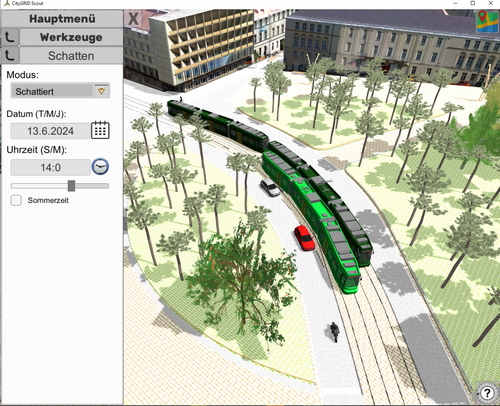
In addition, a lot of larger cities have their own detailed 3D city models. Essential data bases for a 3D visualization of traffic simulations are therefore often already available and in many regions only comparatively small investments are required to better communicate traffic planning in critical areas with the citizens.
The Authors

Günter Sükar Since 2011 Managing Director of UVM Systems and Senior Developer of the CityGRID software system. Mainly responsible for the conception and realization of the Vissim-CityGRID Scout interface.

DI Dr. Gerald Forkert Studied surveying and photogrammetry at the Vienna University of Technology. Managing Director of UVM Systems since 2011, primarily responsible for project management.


